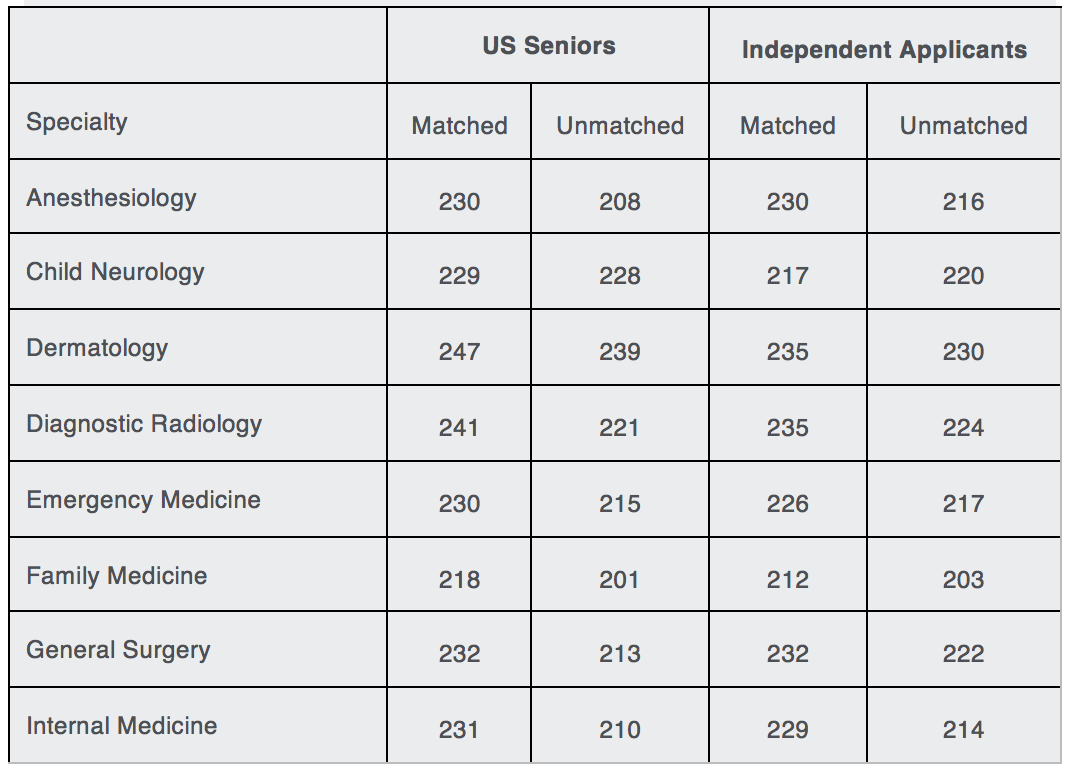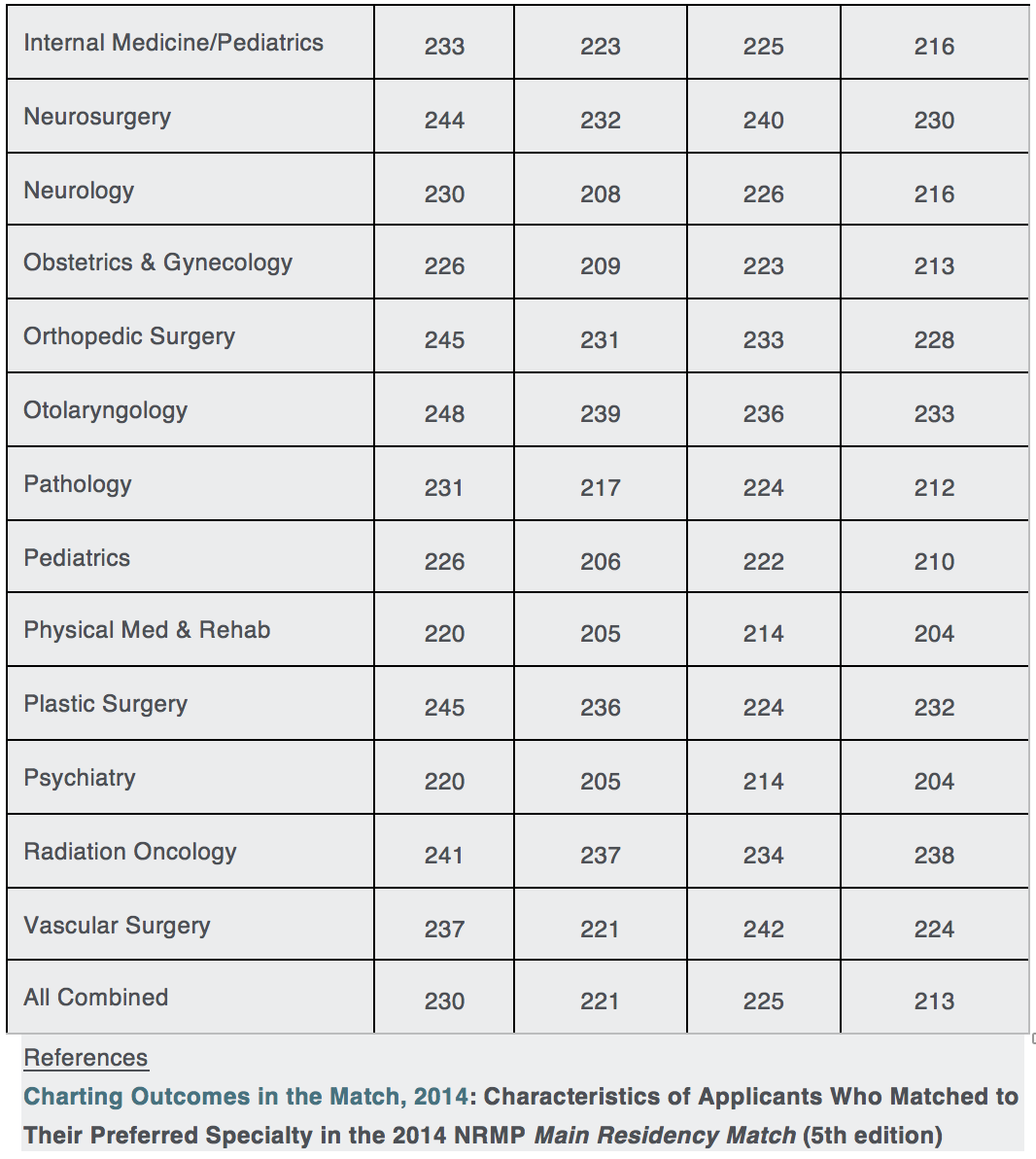Last Updated on June 26, 2022 by Laura Turner
1. Set a goal
As the saying goes, “being begin with the end in mind.” Before you begin preparing for the USMLE Step 1, you should consider where you are with your knowledge base and your score, as well as what your goal target score is. To determine where you are starting from, you should take a practice test. Online prediction calculators use your scores on question banks and the USMLE practice test to estimate how you will do on the actual Step 1 exam.
When setting a goal, consider that 192 is currently the minimum passing score for USMLE Step 1, and 229 was the national average in 2014 (the most recent year for which data is available). However, depending on the specialty into which you desire to match, you may have to aim for a significantly higher score. If you’re not sure what specialty you want to pursue, you’ll want to score as high as possible, though you probably want to do that anyway. This is a table summarizing average USMLE Step 1 scores by specialty in the 2014 Match.


2. Use review resources early
After taking USMLE Step 1, many students say they wished they used their study materials resources they used to study for USMLE Step 1 throughout their courses in the first and second years of medical school. Choosing the right resources depends partly on your learning style. However, you should start preparing for the USMLE Step 1 as soon as you begin medical school by reading the sections that go along with your class lectures. This will help solidify your memory of the topic and will also make you familiar with the review resource when it comes to your dedicated time to study for USMLE Step 1.
3. Develop a study schedule
Find out early on what your school will give you in terms of time off before starting third year clinical rotations. This will help you manage your Step 1 study time during year one and year two. Before you begin your dedicated studying, make a schedule that includes breaks and time to eat. This should include days for taking full practice tests so that you build the mental stamina required and so that you can see how you’re doing with the online score predictors. There are many examples of study schedules available online. If you create or use a schedule that isn’t working for you, change it so you have time to study what you need to study as well as time for practice tests. Most authorities recommend 2-3 months of dedicated study time in order to prepare for USMLE Step 1. Dedicated study time should be treated like a full time job that generally requires 6-8 hours per day, six days per week. However, the amount of time you spend studying each day depends on your own endurance. Studying 10+ hours per day may cause mental fatigue, and you won’t see the return on the time you invested.
4. Develop a study strategy
Your study time will be a mixture of reading and applying that knowledge with questions. Early on, it’s most beneficial to focus most of your study time on reading from a review book or two. This will allow you to review all of the relevant material and gather facts and data. Make sure you study what you don’t know so you can master these subjects rather than just the topics that you already know well.
Do some questions early on so you get a feel for the USMLE Step 1 question format. Do both random questions and timed blocks so you get used to the pacing of the exam. Focusing too much on questions early on will not be effective since you don’t have the knowledge base. As you get closer to the exam, the majority of your time should be spent doing blocks from the question banks, not only to apply the knowledge that you’ve learned but also to build your mental endurance. A good rule of thumb is to begin by spending 90% of your time reading and 10% on question banks. By the last week you should be spending 90% of your time on question banks and 10% reading.
In the last month before you take the USMLE Step 1, try to do 2-3 blocks per day on the question banks. USMLE World and Kaplan are the most popular question banks. Regardless of which question bank you choose, complete as many practice questions as you can. Read the detailed explanations of why the correct answer is correct and why the incorrect answers are wrong. This will help make the question bank a high-yield and efficient study tool. You can take small notes on the questions you got wrong for review later. The simple act of writing these notes will help consolidate memory.
5. Take care of yourself
Optimize study time by getting plenty of sleep and exercise, and don’t forget to socialize periodically. These activities will keep you mentally fresh and better able to learn and synthesize information.

